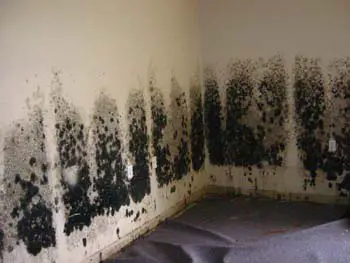 Navigating post-flood challenges? Dive into our guide on “what is flood remediation” to understand the steps and bring your home back to its cozy self.
Navigating post-flood challenges? Dive into our guide on “what is flood remediation” to understand the steps and bring your home back to its cozy self.
Ever come home to a soggy mess after a heavy downpour and wondered how to get things back to normal? Well, that’s where the magic of “what is flood remediation” comes into play.
It’s not just about cleaning up; it’s about restoring, reviving, and making sure your home feels like, well, home again. Let’s dive in and unravel this process together!
What is Flood Remediation?
Flood Remediation is the comprehensive process of removing water, disinfecting, and restoring a property after it has been affected by flooding. It involves ensuring the safety of the structure, preventing mold growth, and returning the property to its pre-flood condition. This process is essential for maintaining property value and health standards.
Ever walked into a room and felt the squish of a wet carpet underfoot? Yep, that’s the aftermath of an unwelcome flood.
But there’s a solution called flood remediation. In this post, we’ll unravel the ins and outs of what is flood remediation and guide you through its various stages.
From understanding its importance to diving deep into the steps involved, we’ve got all the juicy details covered. Ready to become a flood recovery pro? Let’s get started!
Definition of flood remediation
Ah, the big question! So, what exactly is flood remediation? Imagine your home as a sponge that’s soaked up a bit too much water.
Flood remediation is like wringing out that sponge and then giving it a good clean.
In more technical terms, it’s the process of cleaning, drying, sanitizing, and restoring (or “remediating”) a space that has experienced flooding.
It’s not just about getting rid of the water; it’s about making sure the space is safe and comfortable again.
The significance of proper flood remediation for homeowners and communities
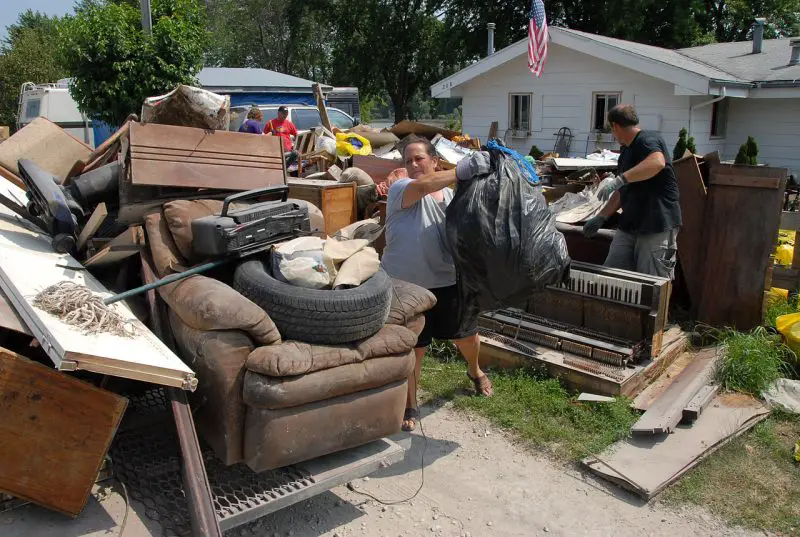
Now, you might wonder, why all the fuss about flood remediation?
Well, for starters, our homes aren’t just buildings. They’re where we create memories, find comfort, and, let’s be honest, binge-watch our favorite shows.
When flooding hits, it’s not just an inconvenience; it can disrupt our lives.
For homeowners, proper flood remediation ensures that their sanctuary remains safe and sound.
And it’s not just individual homes at stake. Think about our communities!
Schools, libraries, local diners and places where we come together. When these places experience flooding, the whole community feels the impact.
Proper remediation means getting our communal spaces back in action, ensuring our neighborhoods remain vibrant and connected.
Understanding the Importance of Flood Remediation
Ever spilled a glass of water on a table and watched as everything got drenched?
Now, magnify that feeling to an entire room or house. Yikes, right?
That’s where flood remediation steps in, like a trusty friend with a super-absorbent towel.
In this section, we’ll dive into why flood remediation isn’t just about cleaning up a mess, but about preserving the heart and soul of our homes and communities.
Ready to grasp the real weight of those puddles on your floor? Let’s jump in!
Health Implications
Do you know that icky feeling when you touch something moldy or slimy?
Well, post-flood situations can be a breeding ground for that ickiness. When water overstays its welcome, it can invite unwanted guests like mold, mildew, and bacteria.
And these aren’t just unpleasant to look at; they can cause allergies, respiratory issues, and other health concerns.
It’s like having a party where uninvited guests show up and refuse to leave.
Proper flood remediation ensures your home doesn’t become a hotspot for these health hazards, keeping you and your family breathing easy and staying healthy.
Structural Concerns
Imagine building a sandcastle and then watching the tide come in. The foundation gets shaky, and before you know it, your masterpiece is history.
Similarly, when water seeps into the nooks and crannies of our homes, it can weaken the very foundation and structures we rely on.
Walls can become soft, floors can warp, and before you know it, your once sturdy home feels a bit wobbly.
Flood remediation is like that friend who helps rebuild your sandcastle, ensuring your home remains the safe haven it’s meant to be.
Long-Term Property Value
Let’s talk dollars and sense. Beyond the immediate mess, if the flood damage isn’t addressed properly, it can ding the value of your property.
Think of it like a car with a few dents and scratches; potential buyers might think twice before making an offer.
Proper flood remediation not only restores the look and feel of your home but also ensures that its market value doesn’t take a nosedive.
It’s like giving your home a spa day, ensuring it looks its best for years to come, whether you’re planning to sell or stay put.
Safety First
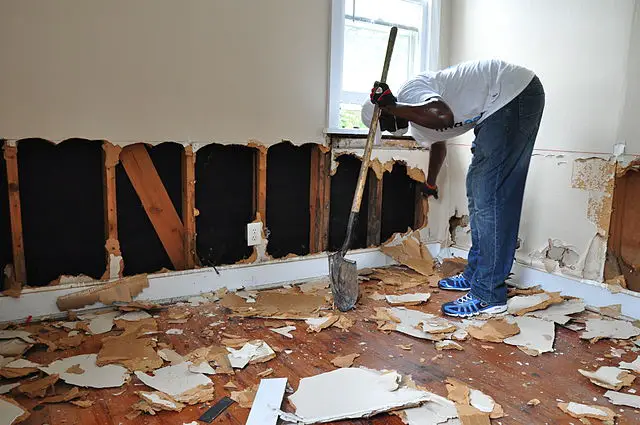
Alright, let’s chat about something we all sometimes take for granted: safety.
Picture this: you’re eager to clean up after a flood, armed with buckets and mops, ready to tackle the mess.
But wait! Before diving into the deep end, it’s crucial to ensure we’re not putting ourselves in harm’s way.
In this section, we’ll explore why “Safety First” isn’t just a catchy phrase but a golden rule when dealing with flood aftermath.
Think of it as the seatbelt before starting a car ride. Buckle up, and let’s delve into the essentials of staying safe!
Recognizing Potential Hazards
Ever stepped on a toy in the dark? Ouch, right? Now, imagine navigating a flooded home without knowing what’s lurking beneath those murky waters.
From hidden sharp objects to contaminants, the aftermath of a flood can be a minefield of potential hazards.
It’s essential to approach the situation with a keen eye, identifying risks before they become real problems.
It’s a bit like playing detective, spotting clues that tell you where to tread carefully.
Essential Protective Gear: Waterproof boots, gloves, safety goggles, masks
Alright, let’s talk fashion flood remediation style! While it might not be the latest trend on the runway, gearing up is crucial.
Waterproof boots ensure you’re not squelching around, and they protect your feet from unseen sharp objects.
Gloves? They’re your trusty sidekicks, shielding your hands from contaminants and ensuring you get a good grip on things.
Safety goggles are like windshields for your eyes, keeping splashes and debris at bay.
And masks? Think of them as your personal air filter, ensuring you’re not inhaling anything you shouldn’t.
Together, this ensemble ensures you’re not just protected, but also ready to tackle the task at hand with confidence.
Ensuring Electrical Safety
Electricity and water are a combo we want to avoid. When dealing with a flooded space, it’s crucial to ensure all electrical systems are turned off before wading in.
This means checking circuit breakers, unplugging devices, and being super cautious around any exposed wires.
It’s all about preventing those unexpected and dangerous “zaps”. Think of it as setting the stage for a safe performance, where you’re the star, making sure the show goes on without any shocking twists.
Initial Cleanup Steps
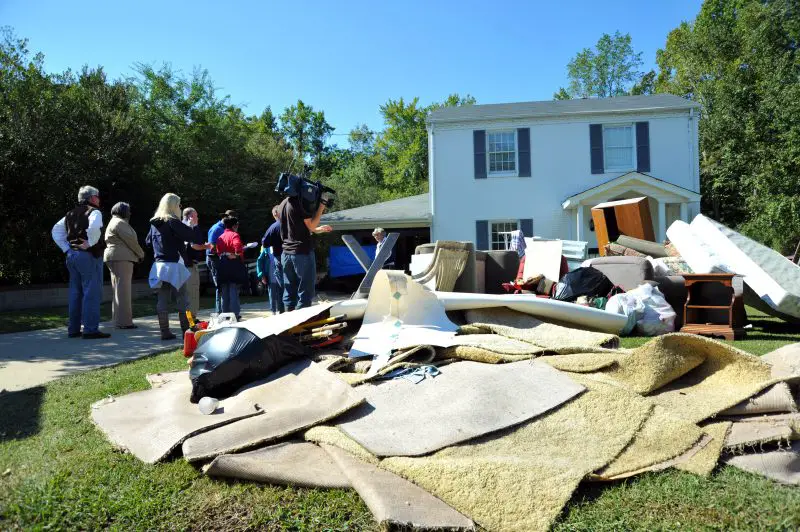
Roll up those sleeves and let’s dive in! Starting the clean up after a flood can feel a bit like staring at a messy room after a wild party.
Where do you even begin? But don’t worry, with a game plan in hand, it becomes a whole lot easier.
In this section, we’ll walk you through the initial cleanup steps, turning that overwhelming mess into a manageable task.
Think of it as tidying up after a fun evening, one step at a time. Ready to get started and see that transformation unfold? Let’s jump right in!
Draining Standing Water
Imagine trying to dance in a room filled with puddles; it’s slippery, messy, and well, not much fun.
The first step in our cleanup journey is to get rid of that pesky standing water.
Whether you’re using old-school buckets, wet vacuums, or sump pumps, the goal is to clear out as much water as possible.
It’s a bit like emptying a bathtub after a long soak. Once the water’s gone, you’ll have a clearer view of the task ahead and a safer space to work in.
Plus, the sooner you get rid of the water, the less time there is for mold to think about setting up shop.
Sorting Debris: Salvageable vs. non-salvageable
Alright, time for some treasure hunting! Well, sort of.
After a flood, you’ll find a mix of items: some that can be saved and others that, sadly, have seen better days.
Start by sorting through the debris, creating two piles. One for items that, with a bit of TLC, can be brought back to life, and another for those beyond rescue.
It’s a bit like sorting laundry; some clothes just need a wash, while others are destined for the recycling bin.
Remember, it’s not just about what’s visibly damaged. Some items might seem okay on the outside but could be harboring contaminants.
Preliminary Cleaning: Dirt, muck
With the water and debris out of the way, it’s time to tackle the dirt and muck left behind.
Grab those brushes, mops, and cleaning agents, and channel your inner cleaning guru.
This step is all about scrubbing away the grime, ensuring surfaces are clean and ready for the next stages of remediation.
Think of it as prepping a canvas before painting; you want a clean slate to work on.
And hey, there’s something oddly satisfying about watching dirt wash away, revealing the familiar surfaces of your home underneath.
It’s a sign that things are slowly but surely getting back to normal.
Building and Structural Assessment
Ever tried on a pair of shoes to see if they still fit after years of not wearing them?
Just like that, after a flood, our homes need a bit of a “fitting” too. It’s essential to check if everything’s still in its right place and holding up as it should.
In this section, we’ll delve into the nitty-gritty of building and structural assessment.
We’re talking about giving your home a thorough check-up, ensuring its bones are strong and it’s ready to shelter you safely.
Curious about what goes into this home health check? Let’s lace up those shoes and take a walk through the process together!
Evaluating Structural Integrity
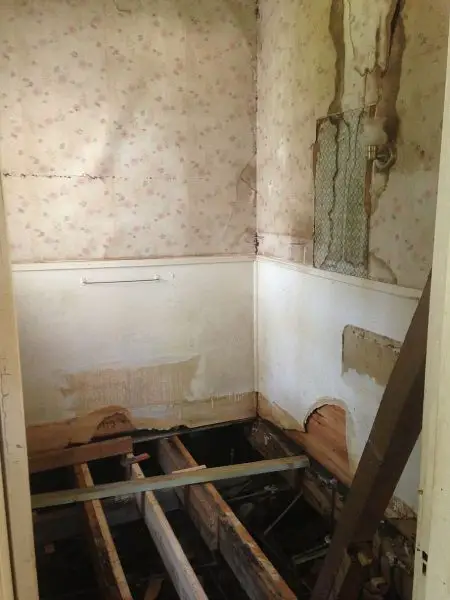
So, let’s think of your home as a trusty old tree. Over time, storms and heavy winds might shake it up a bit, but its roots and trunk keep it standing tall.
Similarly, after a flood, it’s crucial to check the “roots” and “trunk” of your home, the foundational and structural elements.
Are the walls still sturdy? Do the floors feel stable underfoot? It’s all about ensuring that your home, much like that trusty tree, remains a safe haven, ready to weather any future storms.
Checking Utilities: Electricity, gas, water
Now, onto the lifelines of our homes: utilities. It’s a bit like checking the pulse of your house.
After a flood, it’s super important to ensure that the electricity is safe to use, the gas lines haven’t been compromised, and the water is contamination-free.
It’s not just about comfort; it’s about safety. Think of it as ensuring the heart (electricity), lungs (gas), and veins (water) of your home are in tip-top shape.
HVAC System Inspection
Alright, let’s chat about the unsung hero of our homes: the HVAC system.
It’s like the respiratory system for our living spaces, ensuring we’re cozy in winter and cool in summer.
After a flood, giving this system a thorough check is essential. We need to ensure it’s free from contaminants, functioning efficiently, and ready to keep the indoor climate just right.
After all, who doesn’t love coming home to that perfect room temperature after a long day?
Mold and Mildew Prevention
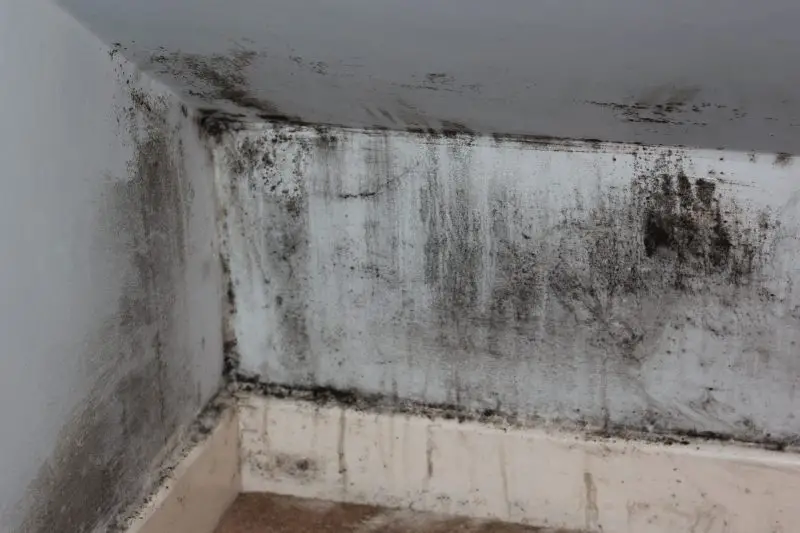
Mold and mildew are the uninvited guests that love to crash the party after a flood.
They might sound like characters from a fairy tale, but trust me, there’s nothing magical about them.
These pesky intruders can be sneaky, setting up shop in hidden corners and causing all sorts of trouble.
But don’t worry, in this section, we’re gearing up to keep them at bay.
Ready to dive into the world of mold and mildew prevention and ensure your home remains a fresh, healthy sanctuary?
Let’s roll up our sleeves and get to it!
Importance of Swift Action
You know that feeling when you spill juice on the counter, and you rush to wipe it up before it becomes a sticky mess?
That’s the kind of urgency we’re talking about here. When it comes to mold and mildew, time truly is of the essence.
The longer we let water sit, the more we roll out the welcome mat for these unwanted guests.
Acting swiftly isn’t just about cleaning up; it’s about preventing a tiny problem from becoming a colossal headache.
It’s like catching that ice cream cone just before it topples over – a quick save can make all the difference!
Drying Out the Property
Imagine leaving a wet towel in a gym bag. It doesn’t take long before it starts to smell a bit off, right?
Now, think of your home in the same way. After a flood, it’s crucial to dry out the property thoroughly.
This means using fans, dehumidifiers, and opening windows to get that airflow going.
It’s all about ensuring your home doesn’t become that damp gym bag.
By keeping things dry, we create an environment where mold and mildew simply can’t thrive.
So, let’s air things out and keep that fresh, homey vibe alive!
Removing Water-Damaged Materials
Alright, let’s chat about spring cleaning, flood edition. Some materials, once soaked, become prime real estate for mold.
We’re talking about things like carpets, insulation, and even drywall.
While it might be tough to part with some items, it’s essential to remove materials that are too water-damaged.
Think of it as decluttering for the health of your home. By getting rid of these compromised materials, we’re taking a proactive step in ensuring mold doesn’t get a foothold.
It’s a fresh start, paving the way for a healthier, happier living space.
Detailed Cleaning, Disinfection, and Deodorization
Alright, let’s get into the nitty-gritty, the deep dive, the heart of the post-flood revival: the grand cleanup!
Think of this stage as giving your home a spa day after it’s been through a tough workout.
We’re not just brushing off the surface; we’re going deep to ensure every nook and cranny feels refreshed.
From scrubbing away the last traces of muck to ensuring every corner smells as fresh as a daisy, this is where the transformation truly happens.
Ready to roll up those sleeves and give your home the pampering it deserves?
Let’s dive into the world of cleaning, disinfection, and deodorization!
Cleaning Surfaces and Items
Ever had a day where you just felt the need to scrub everything down and start fresh? That’s the vibe we’re going for here.
After a flood, every surface, every item, every little trinket needs some TLC.
From the floors under your feet to the ceiling above, it’s all about giving everything a thorough wash.
Using gentle yet effective cleaners, we’ll tackle the grime, the residue, and the remnants of the flood.
And those cherished items? With a bit of care, many can be brought back to their former glory.
It’s like giving your home a refreshing shower after a muddy adventure.
Disinfection Techniques
Now, cleaning is fantastic, but we’ve got to go a step further. Enter the world of disinfection.
Imagine it’s flu season, and you’re arming yourself against germs.
Similarly, post-flood, we need to ensure any lurking bacteria, viruses, or other nasties are shown the door.
Using trusted disinfectants, we’ll make sure every surface is not just clean, but hygienic.
It’s like that extra layer of protection, ensuring your home is as healthy as it is clean.
Deodorization Methods
Last but certainly not least, let’s talk scents. No one wants their home smelling like a damp basement, right?
Deodorization is all about waving goodbye to any musty, moldy, or just plain off smells.
Using a mix of natural and specialized deodorizers, we’ll ensure your home gets back its fresh, welcoming aroma.
Think of it as spritzing on your favorite perfume or cologne before heading out. It’s that finishing touch that makes everything feel just right.
Repair and Restoration
After the cleaning and the sprucing up comes the grand finale: the repair and restoration phase.
Imagine giving an old, cherished toy a fresh coat of paint or mending a beloved shirt.
It’s about bringing things back to their original charm, maybe even adding a few upgrades along the way.
In this section, we’ll journey through the steps of patching up, fixing, and breathing new life into spaces that have faced the brunt of the flood.
Ready to see the transformation from ‘been through a storm’ to ‘better than ever’?
Let’s dive into the rejuvenating world of repair and restoration!
Identifying Necessary Repairs
Alright, let’s play detective for a moment. After a flood, our homes might have a few hidden scars, some obvious and others not so much.
It’s like noticing a scratch on your favorite sunglasses; you’d want to find every mark to get it fixed, right?
The first step in our repair journey is to identify these damages. From a slightly warped floorboard to a crack in the wall, it’s all about spotting what needs mending.
It’s a thorough once-over, ensuring we don’t miss any detail, no matter how small.
Professional Consultation for Major Damages
Now, while we all love a good DIY moment, there are times when we need to call in the experts.
Think of it as visiting a doctor when you have a persistent cough.
For those significant damages that go beyond a quick fix, it’s essential to consult professionals.
They come armed with the expertise, tools, and know-how to ensure your home gets the best care possible.
It’s like having a trusted friend with all the right skills, ready to help you navigate the trickier parts of the restoration journey.
Restoration vs. Replacement Decisions
Here comes the big question: to restore or to replace?
It’s a bit like looking at an old, worn-out jacket. Can it be mended, or is it time for a new one?
Some items and parts of our homes, with a bit of love and care, can be brought back to their former glory.
Others might need a fresh start.
This step is all about weighing the pros and cons, considering factors like cost, sentimental value, and long-term durability.
Whether it’s restoring a cherished piece of furniture or deciding to replace a damaged section of the wall, it’s about making informed choices that suit your home and your heart.
Handling Personal Belongings
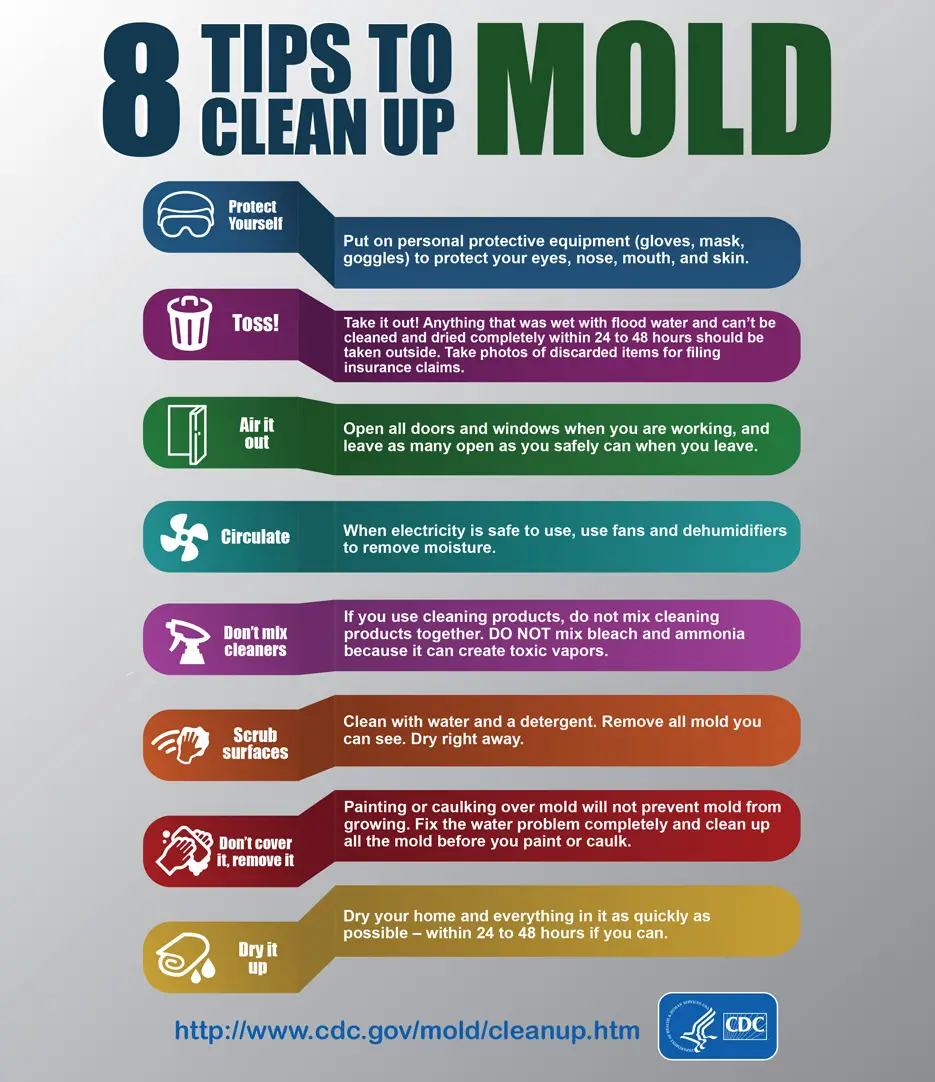
We all have those special items, don’t we? The photo album from that unforgettable trip, the heirloom vase passed down through generations, or that quirky mug you picked up at a flea market.
When floods come knocking, our personal belongings often bear the brunt, leaving us anxious about their fate.
But here’s the good news: with the right approach, many of these treasures can be salvaged and restored.
In this section, we’ll delve into the art and heart of handling personal belongings post-flood.
Ready to embark on a journey of rediscovery and restoration? Let’s give those cherished items the care they deserve!
Cleaning and Restoring Items
You know that feeling of joy when you find a long-lost trinket while spring cleaning?
Now, imagine bringing your flood-affected belongings back to life. It starts with a gentle yet thorough cleaning, tailored to each item.
Whether it’s rinsing, scrubbing, or airing out, the goal is to revive and refresh.
For fabrics, it might mean a gentle wash cycle, while for metal trinkets, a bit of polishing could do the trick.
It’s like giving each item its own mini spa day, helping it shine and feel like its old self again.
Deciding What to Keep or Discard
These are the tough decisions. It’s a bit like looking at your wardrobe and deciding which clothes still resonate with your style.
Post-flood, some items might be beyond repair, while others can be salvaged with a bit of effort.
It’s essential to assess the damage, consider the sentimental and practical value, and then decide.
Remember, it’s okay to let go of things that can’t be saved. Think of it as making space for new memories while cherishing the old ones.
Special Care for Valuable Items
Now, onto the crown jewels of our belongings. Be it grandma’s vintage necklace, a signed first edition book, or that priceless piece of art, some items hold a unique place in our hearts (and sometimes our wallets).
These treasures demand a touch of extra care. It might mean consulting experts, seeking specialized cleaning methods, or finding the perfect storage solution.
It’s all about ensuring these invaluable items get the royal treatment they deserve, preserving their beauty and significance for years to come.
FAQs
We’ve all been there, right? Diving deep into a topic and then suddenly, a bunch of questions pop up.
It’s like assembling a piece of furniture and wondering where that extra screw fits.
In this section, we’ll tackle those burning questions, the ones that have been niggling at the back of your mind.
From the straightforward to the not-so-obvious, we’ve compiled a list of frequently asked questions all about flood remediation.
Ready to quench that curiosity? Let’s dive into the answers together!
Q: What is the meaning of flood remediation?
A: Flood remediation refers to the comprehensive process of cleaning, repairing, and restoring a property after it has been affected by flooding.
It goes beyond just removing water; it’s about ensuring the space is safe, sanitized, and returned to its pre-flood condition.
Q: What’s the difference between flood cleanup and flood remediation?
A: Flood cleanup is the initial step, focusing on removing water and debris from the affected area. It’s like first aid after an injury.
On the other hand, flood remediation is a more extensive process that includes cleanup but also involves repairing damages, preventing mold growth, and ensuring the property is safe and habitable again.
Think of it as the full recovery process after the first aid.
Q: What is the difference between mitigation and remediation of water damage?
A: Mitigation refers to the immediate actions taken to reduce the severity of water damage, like stopping the source of water and removing excess water. It’s about minimizing the impact.
Remediation, however, is the process that comes after, addressing the damage caused and restoring the property to its original state. It’s the healing phase after the immediate response.
Q: How long does the remediation process typically take?
A: The duration of the remediation process can vary based on the extent of the damage, the size of the property, and the specific challenges faced.
Generally, it can take anywhere from a few days for minor damages to several weeks for more extensive issues.
Q: How to prevent mold growth after a flood?
A: Preventing mold growth involves a few key steps:
• Act quickly to remove standing water and start the drying process.
• Use dehumidifiers and fans to reduce moisture levels.
• Clean and disinfect affected areas to eliminate mold spores.
• Ensure good ventilation in the property.
• Regularly inspect for signs of mold and address any issues promptly.
Q: What tools and equipment are essential for flood remediation?
A: Essential tools and equipment include sump pumps or wet vacuums for water extraction, dehumidifiers and fans for drying, safety gear like gloves and masks, cleaning agents and disinfectants for sanitation, and tools for repairs and restoration, such as hammers, nails, and sealants.
Conclusion
And just like that, we’ve journeyed through the ins and outs of flood remediation together! It’s been quite the adventure, hasn’t it?
From understanding the basics to diving deep into the nitty-gritty details, we’ve covered a lot of ground.
But as we wrap things up, let’s take a moment to reflect on the key takeaways and what they mean for our homes and spaces.
Ready for a quick recap and some parting thoughts? Let’s tie it all together with a neat little bow!
The holistic approach to flood remediation
Navigating the aftermath of a flood isn’t just about cleaning up the mess; it’s about embracing a holistic approach.
Think of it as treating your home like a cherished friend after they’ve had a rough day.
You wouldn’t just hand them a tissue; you’d offer comfort, support, and maybe even a cup of tea.
Similarly, flood remediation is about understanding the full scope of the situation, from visible water damage to hidden threats like mold.
It’s about ensuring every corner, every item, and every space is cared for, bringing the entire home back to its vibrant, lively self.
It’s a journey of restoration, not just for the house, but for the memories and moments it holds.
Encouragement for homeowners facing this challenge
To all the homeowners out there facing the daunting task of flood clean up and remediation, here’s a little heart-to-heart.
It’s okay to feel overwhelmed, to wonder if things will ever get back to normal.
But remember, every challenge brings with it an opportunity to learn, grow, and rebuild.
Your home, with all its nooks and crannies, has weathered the storm, and with your love and care, it will shine once again.
Lean on experts, seek support, and trust in the process. And as you take each step, know that brighter days are on the horizon.
Your home isn’t just walls and floors; it’s a space filled with love, and love always finds a way to heal and restore.
